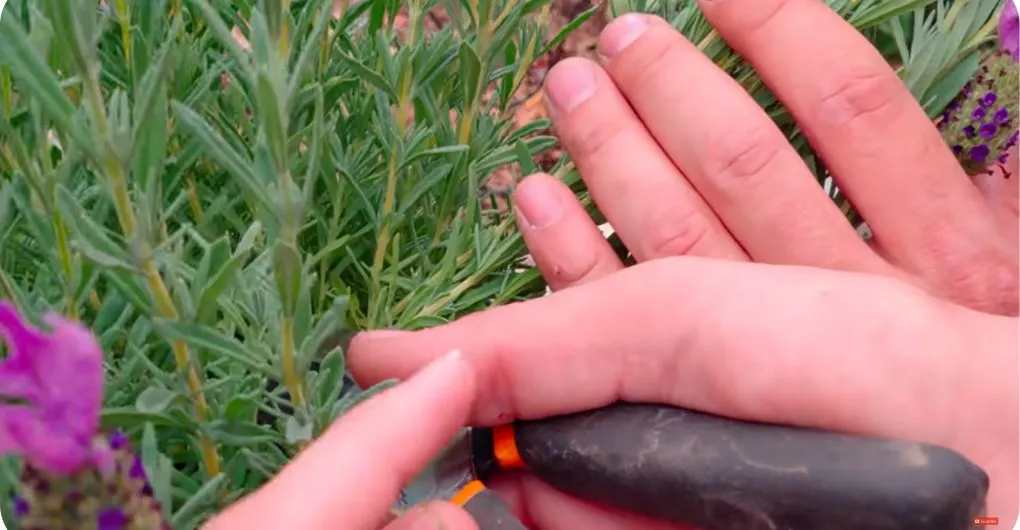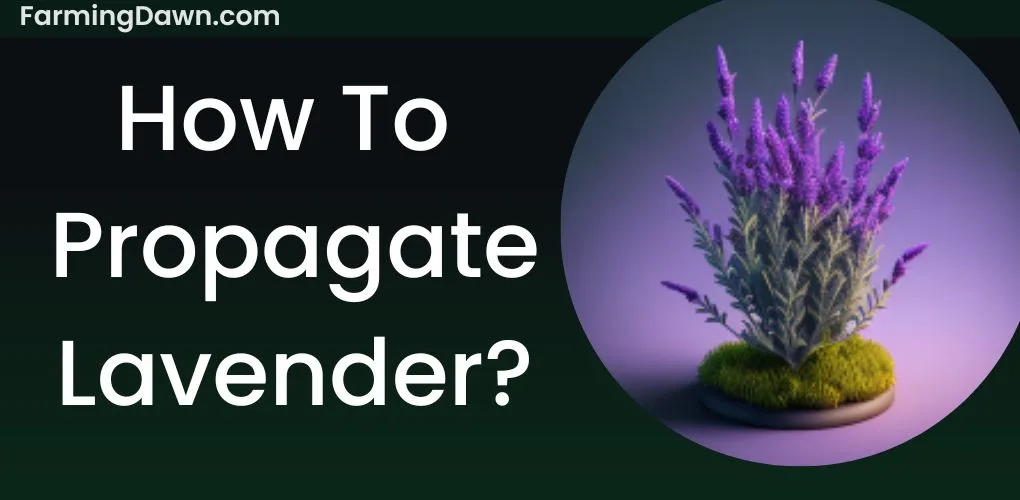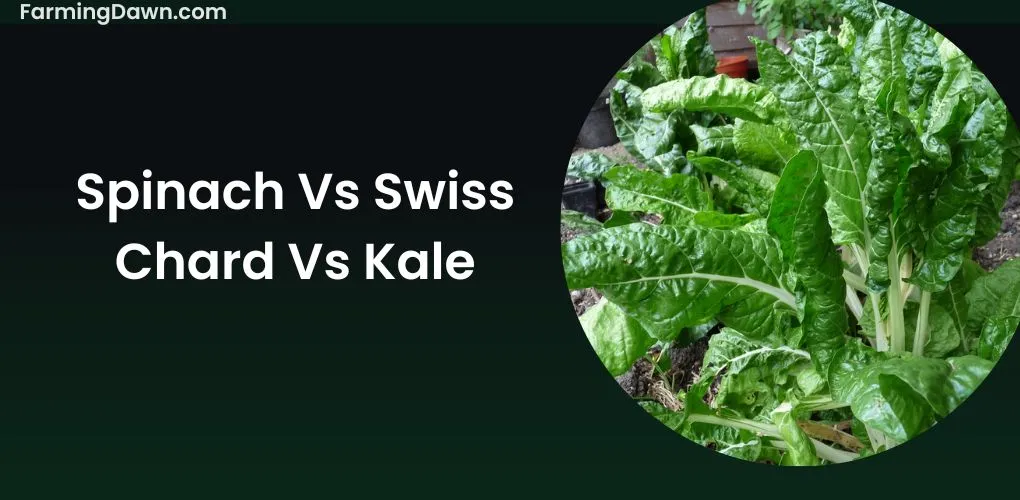Lavender is a popular flower that is relatively easy to grow and propagate and is known for its beautiful blooms. If you want to expand your lavender garden or give some to friends and family, then knowing how to propagate lavender can prove to be an important addition to achieving this goal.
I will walk you through the steps of propagating lavender, rooting lavender in water or whether can you propagate lavender in water or not. in an easy way.
How to Propagate Lavender?
Propagating lavender is a simple and cost-effective way to grow more of this fragrant herb in your garden. The two most popular ways to multiply lavender are by division and cuttings.
In the spring or summer, cuttings are taken from the new growth and planted in a mixture of well-draining soil, kept moist, and exposed to bright, indirect light until the roots have grown and further development has begun to appear.
Lavender clumps are divided in the fall or spring, and each division is then planted in a different location with soil that drains well. These methods are discussed in detail below:
When to Propagate Lavender?
When the weather is warm and the plant is vigorously developing, spring or early summer are ideal for propagating lavender.
New growth cuttings typically have better success rates than older growth. The cuttings will swiftly take root if given the proper care, and in a few months, they will be prepared for transplantation into the garden.
What You Will Need for Propagating Lavender
You will find the following materials for propagating lavender:
- Lavender cuttings
- Potting soil
- Pots or containers
- Water
- Rooting hormone powder
- Scissors or pruning shears
- Plastic bag or clear plastic cover
- Sand or perlite (optional)
- A bright, sunny location
- Good air circulation.
Ten Steps for Propagating Lavender
The ten steps for growing lavender are as follows:
- Choose healthy and mature stems from the parent plant.
- Trim the stem at approximately 40-45° angle, about 6 inches from the tip, and remove the lower leaves.
- Dip the cut end into the rooting hormone to improve the possibility of successful roots.
- A small pot should be filled with a potting mix that drains well, like sand and perlite.
- Create a hole in the potting soil, then place the cut stem.
- Firmly press the soil around the stem to secure it in place.
- Water the soil lightly to settle it around the stem.
- To form a miniature greenhouse, place a plastic bag over the pot, but leave some space for air circulation.
- Place the pot while keeping the soil moist in a well-lit area away from direct sunshine.
- A few weeks later, pluck the stem lightly to check for roots. The lavender plant can be removed from the plastic bag and placed in a larger pot or the garden if resistance is felt, indicating that the roots have grown.
Tips for propagating lavender
The right time to propagate: Whenever possible, propagate lavender in the spring or early summer when the plant is actively growing, and temperatures are warmer.
Choose healthy cuttings
Pick stems that are healthy, green, and not yet in bloom when taking cuttings.
Provide proper Light
Avoid direct sunlight but choose a bright, sunny place, to locate the potted cuttings.
Propagating lavender by Cuttings Method
The most popular way to multiply lavender is through cuttings. Remove the lowest leaves and trim the mother plant’s stems to 4-6 inches in length.
Plant the cuttings in well-draining soil or a mixture of sand and peat moss after dipping them in rooting hormone. Keep the cuttings fresh and in a well-lit area, but not under direct, light until roots have formed.
Propagating lavender by Division Method
You can split an established lavender plant into several smaller plants.
Carefully remove the plant from the ground, and replant the roots after dividing them into smaller portions in a well-drained soil. Make sure that each division has its origins and is thriving.
Propagating lavender by Layering Method
Another simple method of growing lavender is by layering. Just bend a stem to the ground, cover it with dirt, and leave a section of the branch visible.
Cut the stem from the mother plant as soon as it starts to root, then transplant it.
Seeds
Although it is a laborious process, lavender may also be grown from seeds. Put roots in a well-drained soil mixture and keep them in a warm, sunny area.
Maintain continuous moisture in the soil by routinely watering. It may take weeks for seeds to germinate.
Can you Propagate Lavender in Water?
The answer is yes; you can propagate lavender in water. However, it’s important to note that this approach is not always the most effective and may need more time than other methods.
It works best when used in conjunction with other propagation techniques rather than as a sole way of propagation.
How to Propagate Lavender in Water?
Simply cut a stem from an established plant, removing the bottom leaves, to propagate lavender in water. Put the cutting in a water-filled vase or container and place it in a sunny spot.
To stop bacteria from growing, change the water every few days. In a few weeks, roots should start growing from the stem’s bottom.
Once the roots are established, plant it in a pot with well-draining soil and give it regular watering. Keep the ground moist but not soggy.
The cutting should have taken root and be prepared to be planted permanently in the garden after a few weeks.
It’s important to remember that not all lavender cuttings will take root in water. It’s preferable to start over with a new cutting if the original doesn’t produce roots within a few weeks.
How To Propagate Lavender From Cuttings?
Growing lavender from cuttings is a fantastic method for growing new plants from existing ones and having an endless supply of lavender. This technique is easy, cost-effective, and a great way to expand your lavender collection.

How long do lavender cuttings take to root?
Lavender cuttings typically take about 2-4 weeks to root, although this time frame can vary depending on the growing conditions and the variety of lavender being propagated.
English lavender Root time
English lavender cuttings are known to root faster than other types of lavender, typically taking 4-6 weeks.
Spanish lavender Root time
Spanish lavender, on the other hand, can take up to 8 weeks or longer to develop roots.
Hardwood and softwood lavender cuttings Root time
Hardwood and softwood lavender cuttings can take anywhere from 2-8 weeks to root, depending on the time of year and the growing conditions.
Softwood cuttings typically take longer to root than hardwood cuttings because they are more malleable and wet.
However, hardwood cuttings frequently have a stronger root system once they begin to root.
How do you take cuttings from lavender? Step-by-Step
- Select the cutting
Choose a healthy stem of about 6-8 inches in length. Look for green, healthy stems, and free of diseases or pests. Avoid stems that are flowering or have any signs of stress.
- Trim stems
Use sharp, clean pruning shears to cut stems about 4-6 inches long, just above a leaf node. The region of the stem where leaves develop is known as a leaf node. Just below the node, make a cut to promote the growth of roots.
- Remove the lowest leaves.
Only the top leaves should remain on the stem after removing the lower ones. This will stop moisture evaporation and promote root development.
- Dip the cutting
To encourage root growth, put some rooting hormone powder or gel on the cut end of the stem.
- Pot the cutting
Insert the cutting about 2 inches deep into a pot filled with well-draining soil. Verify that the soil is not hidden beneath the leaves. Put the pot in a well-lit, warm area that is out of direct sunlight after thoroughly watering.
- Follow growth
After two to three weeks, look for signs of root growth on the cutting. New leaves and stems will start to form if the cutting is rooted.
- Transplant
The plant can be moved into a larger pot or the garden after it has reached a suitable size.
Why do my cuttings keep dying?
Causes of cuttings keep dying
If you’re having trouble keeping your cuttings alive, it may be due to a variety of factors, including
incorrect watering techniques
- lack of sunlight
- high humidity levels
- use of poor-quality rooting hormone or soil.
Solution for of cuttings keep dying
Use a top-notch rooting hormone and soil mix, carefully adhere to the recommended watering schedule, allow enough sunlight, maintain the appropriate humidity levels, and watch for adequate growth.
Can You Propagate Lavender Cuttings in Water?
Yes, you can propagate lavender cuttings in water, and it’s a relatively easy process after you have taken the cuttings from the lavender. Follow these steps to propagate lavender cuttings in water:
- Fill a jar with water
Put the cutting inside a vase or jar once it has been filled with water. Ensure that the water is submerged up to the stem’s cut end.
- Place the jar in a bright area
Place the jar in an area that receives a lot of light but keeps it out of direct sunlight. A windowsill is an excellent choice.
- Change the water frequently
To keep the water in the jar fresh and stop bacteria from growing, change the water every few days.
- Await the formation of roots
From the cut end of the stem, roots should start to form in around 2–4 weeks. You can plant the cutting in soil once the roots are roughly an inch long.
- Transplanting
To transplant, wait until the roots are substantial. Cuttings rooted in water will begin to produce roots more quickly than those established in the soil, but thicker roots are more likely to survive the shift to the soil.
Can I Propagate Lavender Without Rooting Powder?
It is possible to propagate lavender without rooting powder using various techniques, including stem cuttings, division, or layering.
Stem cuttings can be taken from new growth in the spring or summer and placed in well-draining soil, keeping the cuttings moist until they take root.
Division can be performed by carefully separating and replanting sections of a mature lavender plant.
Layering involves bending a stem down to the ground, making a small cut in the stem, and covering it with soil to encourage roots to form.
20 different Types of Lavender Plants
Here is a list of 20 different types of lavender plants to grow in your garden and enhance its beauty:
- English Lavender
- French Lavender
- Spanish Lavender
- Portuguese
- Woolly
- Edelweiss
- Silver Anouk
- Hidcote Blue
- Grosso Lavender
- Lavandin
- Munstead Lavender
- Phenomenal
- Sweet Lavender
- Provence
- Dwarf Blue Lavender
- Royal Velvet
- Rosea Lavender
- Majesty Lavender
- Anouk
- Fathead Lavender
How to Propagate Lavender? Final Thoughts
Thus, knowing how to propagate lavender is a simple and fulfilling task that can be done in the comfort of your own home.
After reading this article, I hope you can grow lavender from cuttings in your garden. If you have any additional queries, tell me in the comment. Thank you!





